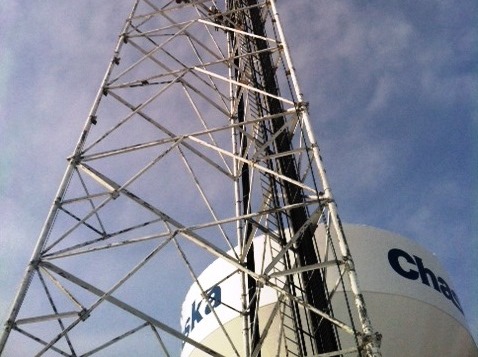
When internet connectivity is critical -- the fixed wireless advantage
“For cost-effective service with diverse carrier and conduit connectivity, fixed wireless delivers true redundancy and benefits you won't find with other options.”
Becky Parker | VP of Marketing and Product Development | Nextera Communications
Like electricity and water, Internet access has become an essential business utility and our reliance on it grows daily. Driven by mission-critical applications, many apps are moving to the cloud – like Voice over IP (VoIP), telepresence, Software as a Service (SaaS), social media, cloud computing, and real-time collaboration. As a result, the impact of Internet downtime can be costly. Forrester® research estimates that two hours of Internet downtime for an enterprise with 1,000 website visitors per hour will lose $47,662*. To prevent the revenue and productivity losses that can occur from downtime, deployment of an Internet redundancy/continuity plan is a business necessity.

Nextera Fixed Wireless Tower
Some companies try to protect themselves from downtime by installing two T-1 or DSL lines. However, hard-wired carriers share the same conduits and wiring centers as local phone and cable companies – so if one line goes down, there's a high probability the other lines will, too.
What's the alternative? For cost-effective service with diverse carrier and conduit connectivity, fixed wireless delivers true redundancy and benefits you won't find with other options. It provides high-speed, dedicated business broadband that's securely delivered through the air instead of underground so it isn't vulnerable to the same issues that often disrupt wireline service. And when successfully implemented with a load balancing or failover system, the transition from wireline to fixed wireless is so smooth, it's imperceptible to users.
To find fixed wireless service that meets your needs, ask the following questions
• Is the fixed wireless designed according to carrier class standards?
• Do these standards include redundant paths within its core network?
• Does the fixed wireless connect with multiple tier-one Internet providers to ensure service reliability?
• Is there a Service Level Agreement (SLA) that guarantees network availability, latency and packet loss?
• Can I incorporate voice services over a fixed wireless link and prioritize voice traffic?
• Can the provider ensure your company's bandwidth requirements?
• If you need connectivity between two corporate building locations, does the provider offer point-to-point service?
• What are the security authentication standards used?
Redundant Internet Provides Preventive Protection for Business Continuity
Our locally-owned and managed company, Nextera Communications, has partnered with fixed wireless technology leaders to design a carrier class wireless network that includes redundant paths within its core. We connect with multiple tier-one Internet providers to ensure continued service reliability; offer guaranteed bandwidth and symmetrical speeds from 1.5Mbps to 1Gbps; and include a Service Level Agreement (SLA) that guarantees network availability and limited latency and packet loss. We also offer voice services (VoIP) over the wireless connections and provide QoS (Quality of Service) to guarantee voice traffic prioritization and ensure the highest call quality.
Whether using fixed wireless service as part of a redundancy/continuity plan or as a primary circuit to one or more locations, fixed wireless delivers high performance at an affordable price, providing dedicated business bandwidth for the power you need to meet even the biggest data demands.
Deploying a redundancy plan is considered best practices for businesses because for a relatively small investment, business continuity is assured. Of the variety of redundancy options available, it makes sense to explore the benefits fixed wireless offers as an Internet service alternative to ensure network uptime. As Benjamin Franklin, one of America's earliest technology pioneers, advised: "An ounce of prevention is worth a pound of cure."
Dines, Rachel. "It's Time to Add Hacking into Your Disaster Recover Plans as a Potential Risk for Downtime," Forrester, February 16. http://bit.ly/1dA8odB